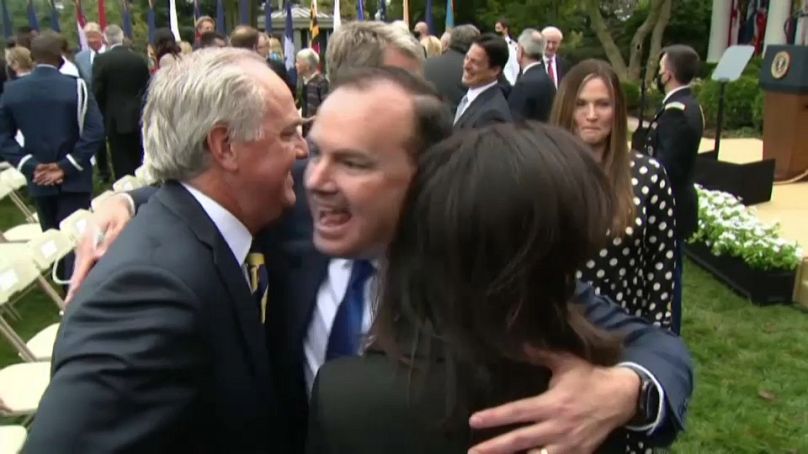COVID-19 was first identified less than a year ago, but has had a huge impact upon events worldwide - not least the US Presidential race. Euronews maps the political twists and turns that virus has mapped out.
The emergence of COVID-19 was an unprecedented event that neither side in the US Presidential election could have planned for - and it came to dominate the process like no other issue.
At the White House, sceptical of scientists' warnings, President Donald Trump's first reflex was one of denial.
In February, he insisted the virus wouldn't last:
"The virus that we're talking about having, a lot of people think that goes away in April with the heat, as the heat comes in.
"Typically that will go away in April"
Trump introduced partial travel bans on China and Europe, but dismissed the need for wearing masks. This was in contrast to his Democratic Party rival Joe Biden, who was rarely seen without one
Trump's administration's message on social distancing was at best mixed; supporters often mingled closely at presidential events such as a White House event for his supreme court nominee Amy Coney Barrett.
From people attending that event, at least 12 were later confirmed to have contracted the virus.
In contrast Joe Biden's public appearances manifestly respected the rules; this was interpreted as a clear political statement, as the crisis deepened.
The candidates also differed on lockdown. Biden advocated the move happening sooner and continuing for longer.
Fearing the economic impact, Trump initially resisted. Once it became inevitable, he wanted states to reopen businesses as soon possible, insisting that the lockdown was doing more harm than good.
In June, Biden lamented what he saw as a lack of leadership:
"We've lost lives. We've lost businesses. We've lost paychecks.
"And now, thanks to Donald Trump's bungling, we may lose some of the progress we've begun to make."
While Biden remained cautious, Trump promoted certain drugs that scientists didn't wholly endorse.
Like many, the former Vice President had been amazed by Trump's remarks in April on the potential use of disinfectant to counteract COVID-19 within human bodies:
"I see the disinfectant which knocks it out in a minute.
"And is there a way you can do something like that, with injection inside or almost a cleaning?"
From the outset - and against the prevailing scientific consenus - Trump told voters a vaccine would be available soon. The availability of one would've been likely to boost his re-election hopes.
Instead, what he got was the virus itself, after close aide Hope Hicks%20%3Ca%20href=%22https://twitter.com/realDonaldTrump/status/1311859538279239686?ref_src=twsrc%5Etfw">October 2, 2020</a></blockquote> <script async src) tested positive.
Contracting the virus didn't change President Trump's approach to the pandemic; rather he portayed his recovery as a personal triumph. But by that stage, much of the electorate had already made up their minds on his handling of the crisis.












